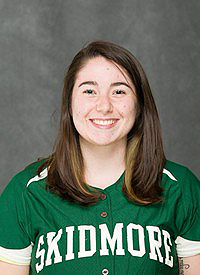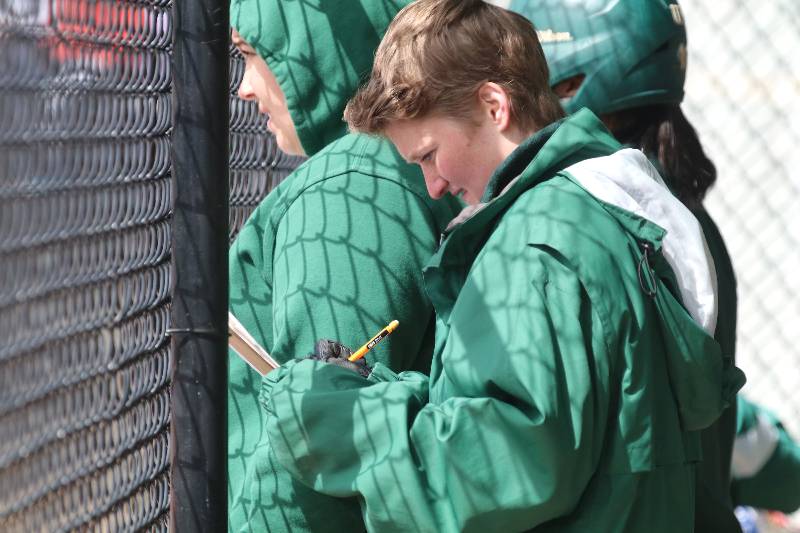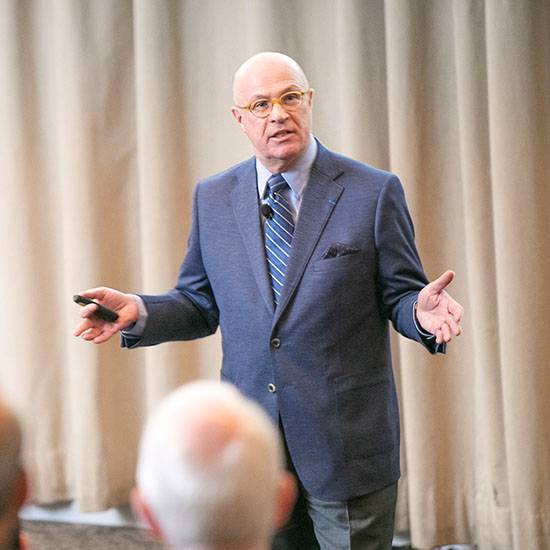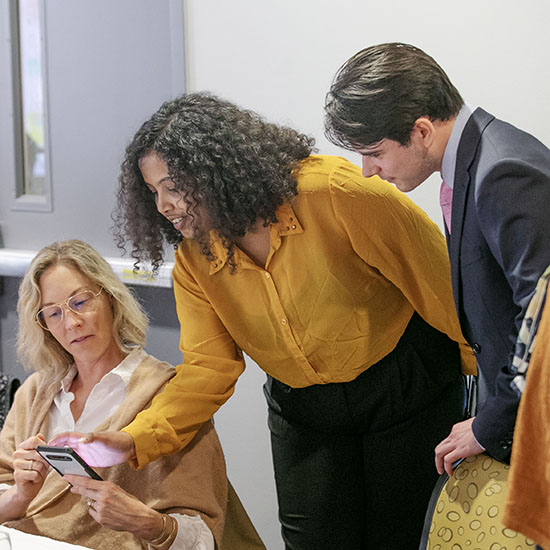Moneyball comes to Skidmore
This story is one in a two-part series about collaborative research at Skidmore College. Read the first story "Can Adirondack forests help fight climate change?"
Did you know that Skidmore’s softball home, Wagner Park, is the top hitter’s park in the Liberty League—the field where on average the most runs are allowed per game?
In fact, of the 15 fields on which the Thoroughbreds routinely play, those at the non-Liberty League Sage Colleges, Cazenovia College, and Utica College are the only ones where more runs are scored. The stingiest park in the league: St. Lawrence University. Toughest overall: Williams College.

Jillian Strileckis '18
These results came from “Moneyball for Softball: Exploring Softball Analytics,” the collaborative summer research project conducted by math professor Michael Lopez and math major and softball player Jillian Strileckis ’18, a member of the Skidmore squad that this year reached the program’s first-ever Liberty League final.
The aim of their project, one of nearly 60 in Skidmore’s 2016 Faculty-Student Summer Research program, is to implement and adapt the novel analytics made famous in Michael Lewis’s 2003 bestseller, Moneyball, for collegiate softball, an unexplored area of sports research. Their goal: to provide analytical tools to help softball coaches make better game decisions and improve player evaluation and performance.
Moneyball, which came out as a movie in 2011 starring Brad Pitt, focuses on penny-pinching personnel decisions by MLB team the Oakland A’s that were based more on stat sheets than so-called expert wisdom. On-base percentage, for example, was an underutilized measure of player effectiveness that the A’s used to good effect in their trades and signings.
Lopez and Strileckis chose to focus on “fielding-independent pitching” and “runs created” (definitions below) to break new ground. According to Strileckis, who ultimately wants to work in the growing field of sports analytics, “we used regression models on individual-level data to create player predictions for next year and used mixed-effects models on our team-level data to account for park factors.”
So what were their major findings?
- Hitters improve from freshman to senior year.
- Most hitters have their best seasons senior year.
- Pitchers don’t appear to get better or worse from freshman to senior year.
- Skidmore’s field is more of a hitter’s park compared to other fields (fourth-most runs allowed out of 15 fields).

The research project aims to implement and adapt the novel
analytics made famous in Moneyball, for collegiate softball.
At the conclusion of their brief study, Lopez and Strileckis presented their findings to head softball coach Hannah Shalett Quintana, who has guided the team to three consecutive playoff appearances. Says Lopez of Quintana, “She seemed especially interested in the information on field differences because it could affect game strategy and lineup choices.”
Professor Lopez’s primary research lies in deriving causes and effects using observational data—for example, does reading nutritional labels on food items lead to healthier outcomes? But the former college athlete also has a personal interest in statistical methods for analyzing sports data and has published multiple papers on both hockey and football. In his spare time, he keeps an active blog and has also written for FiveThirtyEight, Sports Illustrated and Deadspin.
As for what’s next, Strileckis says, “There are several conferences coming up at which professor Lopez would like me to present. I’m also looking to publish some of my findings on a softball analytics blog.”
Notes:
"Fielding Independent Pitching" converts a pitcher’s three true outcomes into an earned run average–like number. The formula is (13*HR+3*BB-2*K)/IP, plus a constant (usually around 3.2) to put it on the same scale as earned run average.
Runs created: R C = AxB/C, where A = on-base factor, B = advancement factor, and C = opportunity factor.


